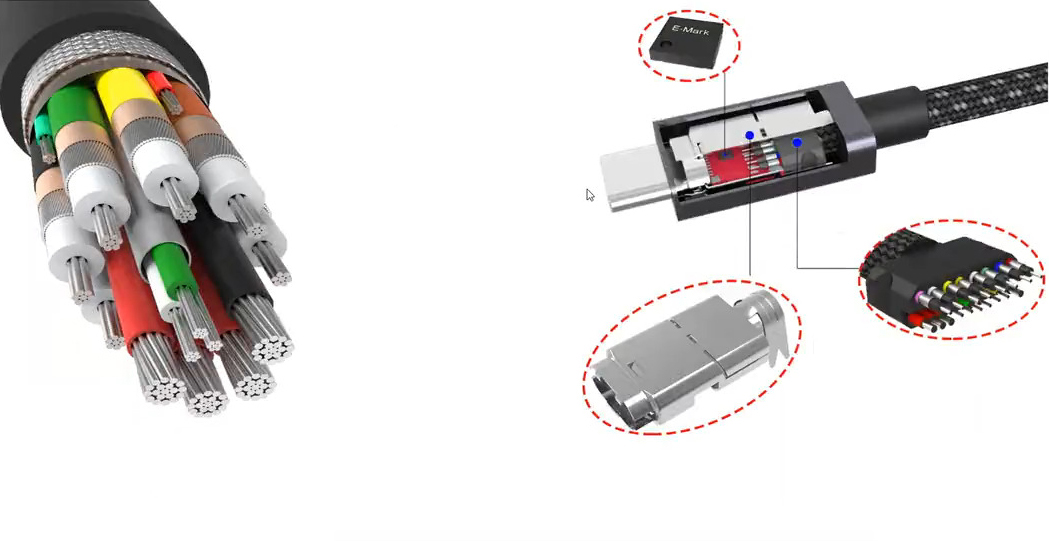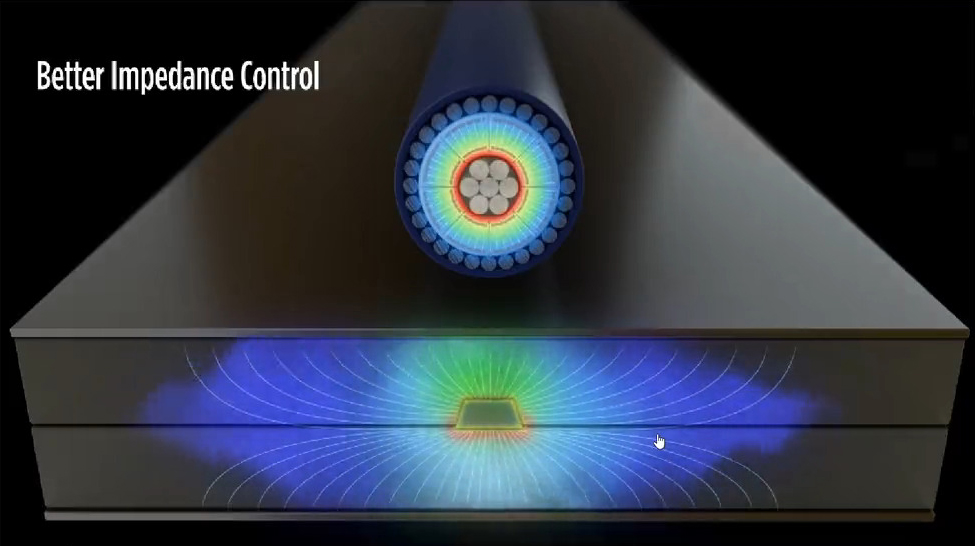In spite of the increasing speed at which data can be transmitted, cable diameters continue to decrease with the introduction of newer standards such as USB 3.2, USB4, Thunderbolt 3, Thunderbolt 4, and HDMI 2.1.
High-frequency signals are severely attenuated as cable diameter decreases due to an increase in differential impedance of the conductor (the differential impedance of the conductor is inversely proportional to the conductor area and proportional to the length of the cable).
Given that the new standard places stricter requirements on data transmission, the once-maligned coaxial cable is once again in the spotlight.
Coaxial cable, rather than stranded cable, seems like a strange choice for USB4.

The coaxial cable’s construction makes it self-protecting. Metal braided shielding layer outside conductor, metal net blocks EMI. The cable experiences electromagnetic interference from the outside world and internally from the magnetic field it generates as it sends and receives varying signals.
With a metal shielding net surrounding the coaxial cable, both the external electromagnetic interference and the internal magnetic field are blocked. That’s why the only things that matter when it comes to signal attenuation in a coaxial cable are the distance at which it’s being sent and the frequency at which it’s being sent.

The coaxial cable’s loop is also untwisted, which is a notable distinction from the twisted strands of standard cables. If the stranded cable’s twist rate is 1.1, for example, the apparent length of the cable is 1.1 meters even though the core wire is only 1 meter in length; if the coaxial cable’s twist rate is 1.0, the apparent length of the cable is still 1 meter.
High-frequency impedance is significantly affected by the length. If you can get away with a shorter cable, do so. To sum up, the length of the USB 3.1 GEN2 cables we encounter is typically less than 1.0 meters, the Thunderbolt 3 cables are typically less than 0.7 meters, and the Apple Thunderbolt 3 cables are longer than 0.8 meters.
So, what are the advantages of coaxial cable compared to stranded cable?
Conventional methods of sending signals use stranded cable. The high-frequency impedance of stranded cable can vary by as much as 10%, while the impedance of coaxial cable can vary by as little as 3%.
Stranded cables are technically compatible with USB4, but they will have a hard time meeting all of the specifications once production begins.
- To begin with, the coaxial cable is incredibly flexible;
- flex life of more than 5000 cycles for swings and about 3000 cycles for stranded wire;
- Third, the diameter is small; in conventional stranded wire, the loop is created by twisting together two wires, which is roughly equivalent to two wires side by side, but in coaxial wire, the metal braided shielding layer serves as the loop, and the diameter is only slightly larger than a single wire. The diameter is significantly less than that of a stranded wire consisting of two parallel wires;
Disadvantages of coaxial cables:
- Because each high-frequency signal wire requires its own braided shielding layer, production efficiency is low, and the less expensive PE insulation material has been replaced with the more expensive Teflon, making the whole process quite pricey.
- Complications in processing stem from the thinness of the conductor, which necessitates the use of laser cutting rather than more conventional methods for removing the insulation and metal braid from the core wires.
There is a pressing need for both high bandwidth and high speed in the wake of the arrival of the 5G and 6G big data era.
As such, this condition can be satisfied only by coaxial cable. The next generation of high-speed cables will increasingly use coaxial cable.